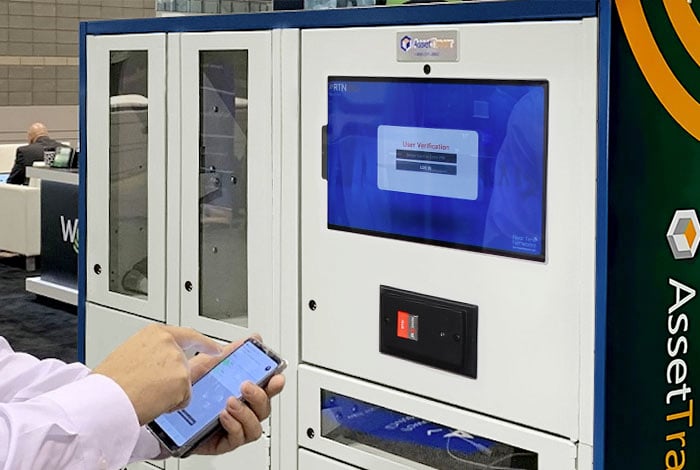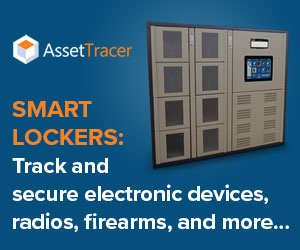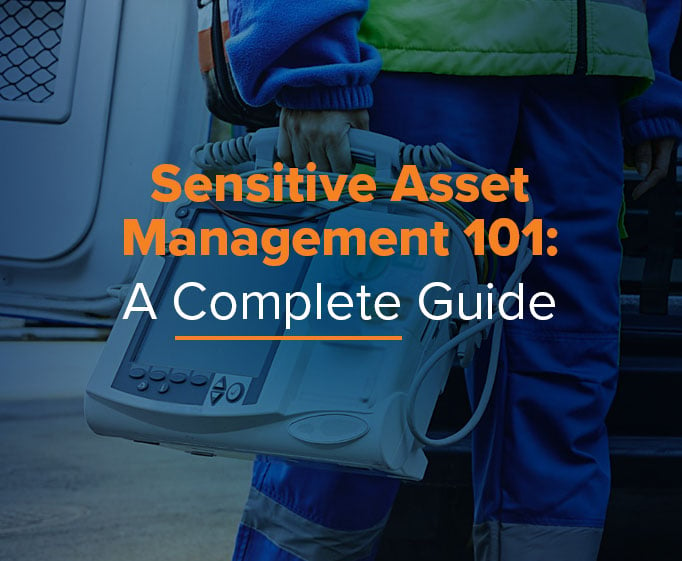By Jay Palter | July 14, 2020

Secure locker systems are deceptively powerful business tools. They can be used for much more than just secure storage, although they’re pretty good at that job, too.
Lockers with smart management systems offer digital solutions to real-world physical problems. They can help improve everything from equipment management to compliance efforts and the facilitation of low-contact package deliveries. They can be a powerful tool to drive digital transformation in business.
What exactly makes a secure locker system so valuable? How exactly do they work, and how can businesses use them? We've got answers.
What Exactly Is a Secure Locker System?
Traditional storage lockers just secure assets. Their job ends there. Secure locker systems are storage cabinets with an integrated computer and sensor network built in. These integrated systems automate many time-consuming tasks and enable whole new workflows that aren’t possible with just a manual system.
When equipment, lab samples, documents, weapons, and other assets are used in a larger workflow, the locker system can often automatically manage the whole operation. For example, a smart weapons locker can be configured to require users to log any performance or safety issues when returning weapons after duty. When a user does record an issue, the system locks down the weapon, preventing it from being withdrawn until it is inspected.
Essential Features to Evaluate in Secure Locker Systems
Here are the key features you should evaluate in each locker system on your short list:
User Authentication
This could be a touch screen access panel, like in our AssetTracer systems, or it could be a keypad or lock box. Common authentication methods include PIN codes, swipe cards, mobile phone app authentication, or biometrics such as fingerprints, facial scans, or iris scans. Consider whether the authentication component can integrate with any existing access control system you might already be using.
Locker Cabinets
Lockers can come in very different sizes, so you need to ensure the solutions you’re considering have a footprint that can actually fit into your facility. Some locker systems are modular and expandable, which is a good choice if you think your storage needs will change or grow over time, or if you have mixed-use storage needs.
Management System
This is what makes a locker system “smart.” The management software monitors how the lockers are being used and automatically makes changes as needed. For example, the software logs transactions so you have a complete, digital “paper trail” of who had which items and when. The system can also automatically send alerts so you know if someone is late returning equipment.
Content Surveillance
This is another type of smart technology that scans and identifies assets placed inside locker compartments. Locker systems can provide content surveillance via wireless radio-frequency identification (RFID) tags or through wired connections for certain electronics. If the content surveillance system detects that the wrong item was returned or if a tagged component is missing from a returned case, the system issues an alert to supervisors.
Provider Service & Support
Remember to evaluate more than just the hardware. See what kind of service and support options each system’s provider offers. How responsive are the providers if there is a problem that needs immediate action?
6 Ways to Use Secure Locker Systems
A locker system can help you manage assets in many different ways. Here are some of the solutions we’ve helped develop for our customers with our AssetTracer system:
1. Automating Handheld Equipment Distribution
This setup is ideal for warehouses, distribution centers, or any workplace where handheld equipment needs to be distributed efficiently at the beginning of shifts. An employee accesses the system at the beginning of their shift. Only the assets they’re authorized to use are made available, which could mean just a single handheld scanner or tablet from a pool of available devices.
At the end of their shift they sign the asset back in and report any service needs if the device is malfunctioning. If the lockers are equipped with content surveillance, the system verifies that the correct asset was returned, and if it is flagged for service it sends an automated message to technicians.
This setup automates what otherwise might require a dedicated staff member and storage room. Not only is this automated system more cost-effective and efficient than manually tracking a large set of electronic devices, but it also keeps staff more accountable for lost or damaged assets. Because the transaction log can’t be wrong due to human error, staff have no excuse if an asset is lost or missing.
2. Deploying Automated Deposit/Withdrawal Systems
This setup is well-suited for retail businesses looking to reduce direct person-to-person contact or to make a customer’s purchases available off-hours. It could also be a good fit for securing asset transfers within a business if you need to exchange high-value assets that can’t be left unattended.
Staff use the access control terminal to deposit an item in an available locker and set the conditions for it to be removed. That could mean only certain authorized users can remove it, or only a customer with a one-time-use authentication code. Setting up automated deposit/withdrawal lockers reduces both direct person-to-person contact and your customer service staffing load. Transactions are safe, secure, and possible any time of day.
3. Tracking Evidence & Sample Storage
Law enforcement organizations often need to store highly sensitive items, like biological specimens and other physical evidence. These organizations need to demonstrate a constant chain of custody at the same time that they’re asked to store evidence under a rapidly evolving set of regulations.
A locker system with appropriate refrigeration is a suitable solution for this need. It can control and monitor access to each piece of evidence, locker by locker, in real time. It can record which officers accessed the system, which compartment they opened, and when the transaction occurred.
Law enforcement agencies often don’t have the staffing to monitor evidence rooms off-hours. Automating evidence management with a secure locker system gives them round-the-clock security. They can use one central management system to control evidence lockers across multiple precincts, ensure chain of custody is maintained at each location, and manage all compliance efforts.
4. Physical Management for Mobile Devices in Workplaces or Higher Education
Locker systems are a great tool for managing the use of shared laptop or tablet pools. Every transaction is completely logged, and usage can be monitored in real time.
The locker system only unlocks the one compartment from which students or workers are authorized to remove a device, while all other devices are kept locked in place. Device sign outs can be set on a rotation to distribute wear and tear across the entire asset pool.
On return, the user logs any problems with the device and the system opens the one locker they should return it to. Tech support can be automatically notified if a device is reported as failing. Content surveillance verifies returns so bad actors can’t keep expensive equipment that they have falsely logged back in. Additionally, the lockers ensure that electronic devices stored within them are charged and ready for the next shift. They can also alert the user if the device is not plugged back in upon return.
5. Monitoring Hard Case Storage for Regulated Assets
Secure locker systems are a great tool for tracking regulated items that are at risk of internal theft, like narcotics in hospitals or in EMT agencies. Secure lockers work well for tracking any kind of regulated asset. Real Time Networks has even used AssetTracer systems to help airlines ensure their kitchen knives aren’t smuggled or mistakenly taken from food prep areas onto planes.
Individual medication vials—or whatever items you’re tracking—are tagged with RFID content surveillance tags. All tags are verified when med bags are returned. EMTs can be required to log low pill counts so coordinators are notified immediately when bags need to be restocked.
This automation enforces better accountability among staff accessing regulated narcotics. Transactions are more efficient. Medication coordinators can remotely lock down bags if they need to be pulled for recalls.
6. Firearm & Equipment Storage for Law Enforcement and Security Personnel
Locker systems are also an excellent tool for securing high-risk equipment like firearms. Real-time alerting lets your organization respond quickly to any access issues. Emergency locker releases can be triggered by supervisors at authorized PCs or mobile devices.
Transactions are updated in real time so you always know who has which items. Access control is done locker-by-locker, and you can restrict who has access to which firearms or police equipment by individual officer, shift, location, or job type. Lockers can be centrally managed when you want to deploy systems at multiple precincts or detention centers.
What Can Secure Locker Systems Do for You?
These are just some of the uses we’ve developed for our customers with our AssetTracer secure locker system. With many different hardware and software options available, any organization can customize a locker system tailored to their exact needs.
Are you considering using a locker system at your organization?
Contact Real Time Networks today to schedule a free virtual consultation.
Subscribe to our blog

Jay Palter
Vice President of Marketing & Partnerships






